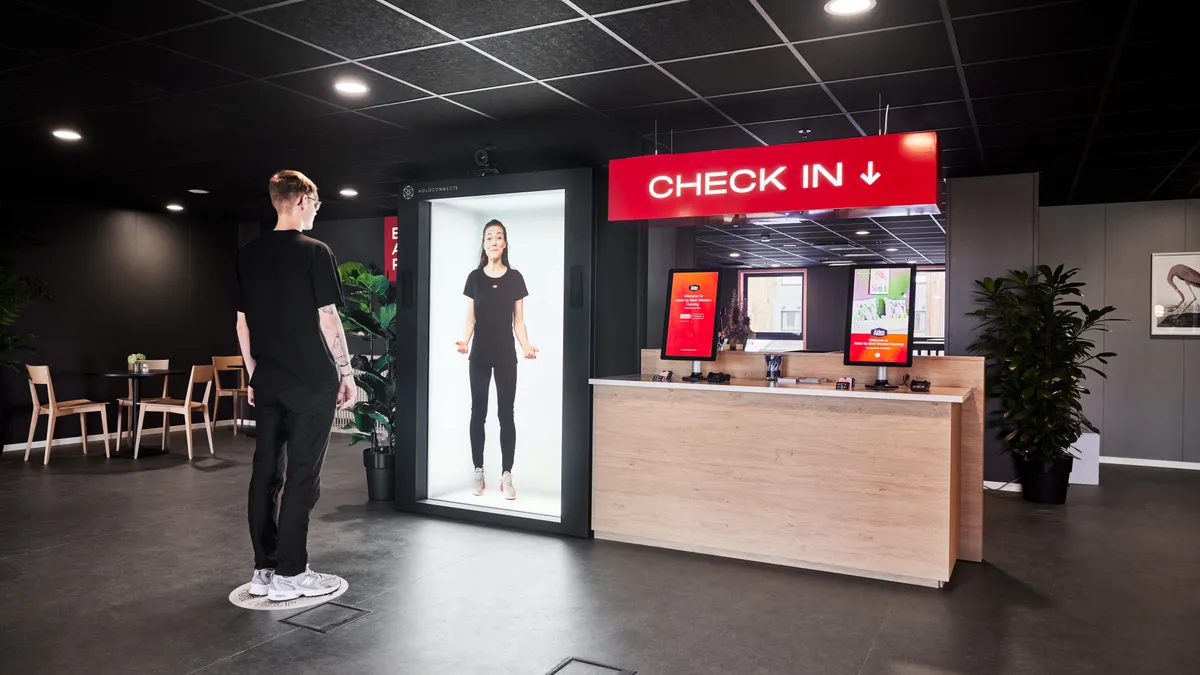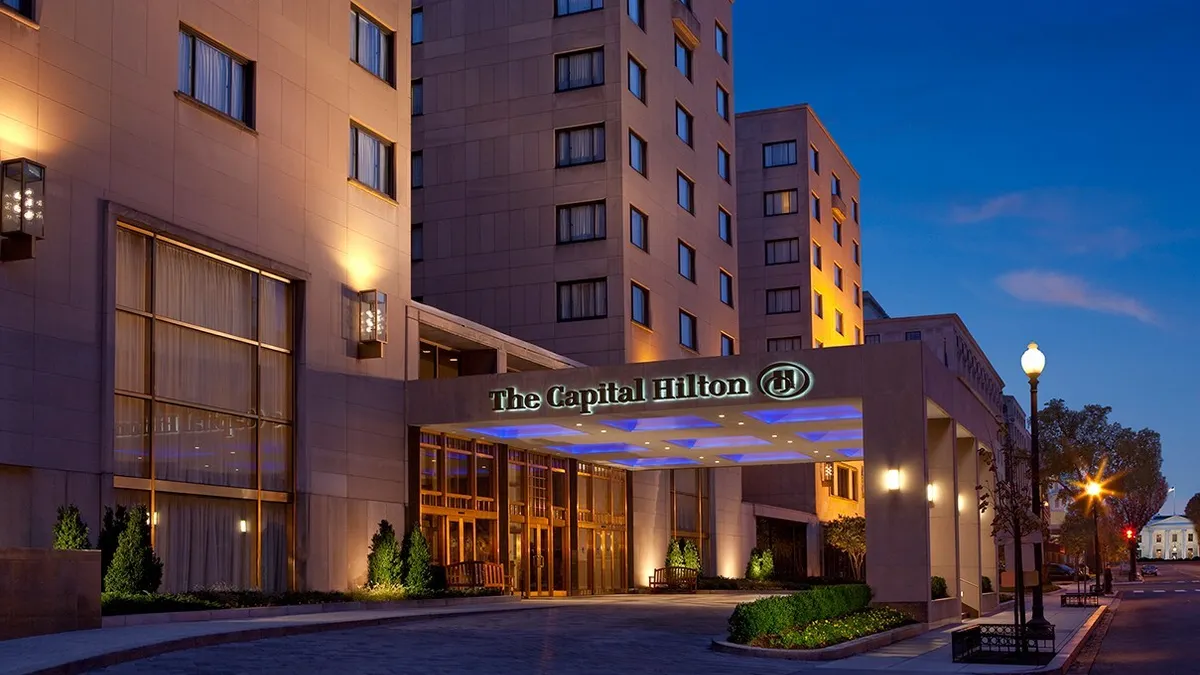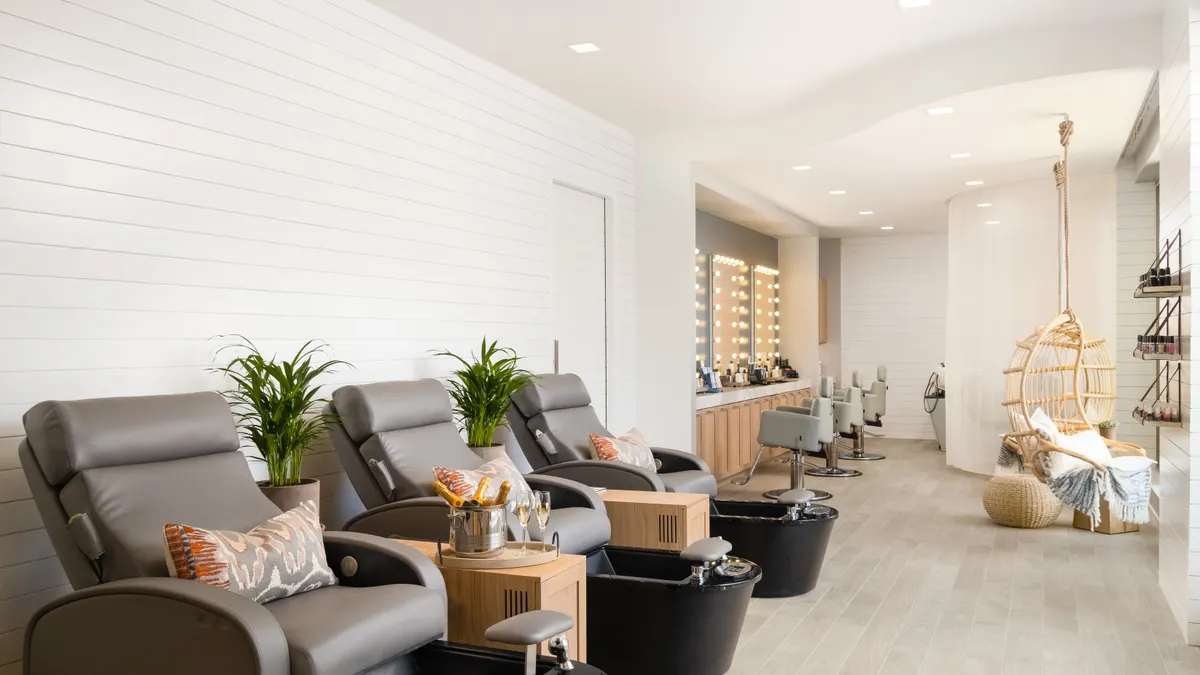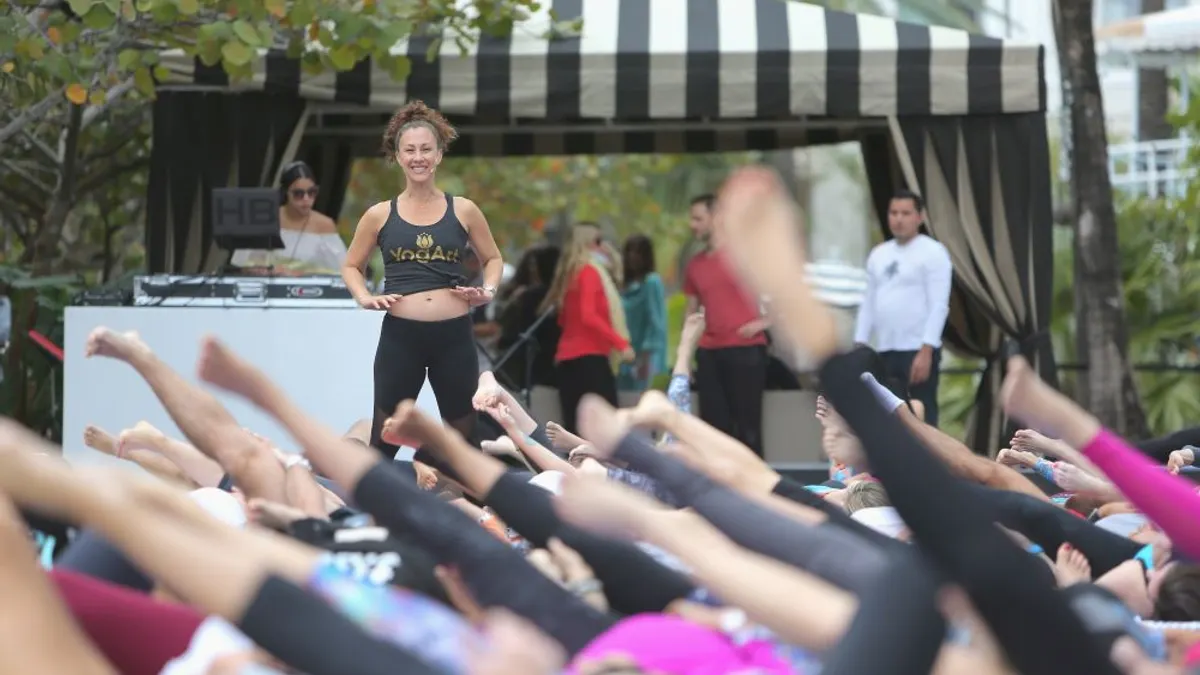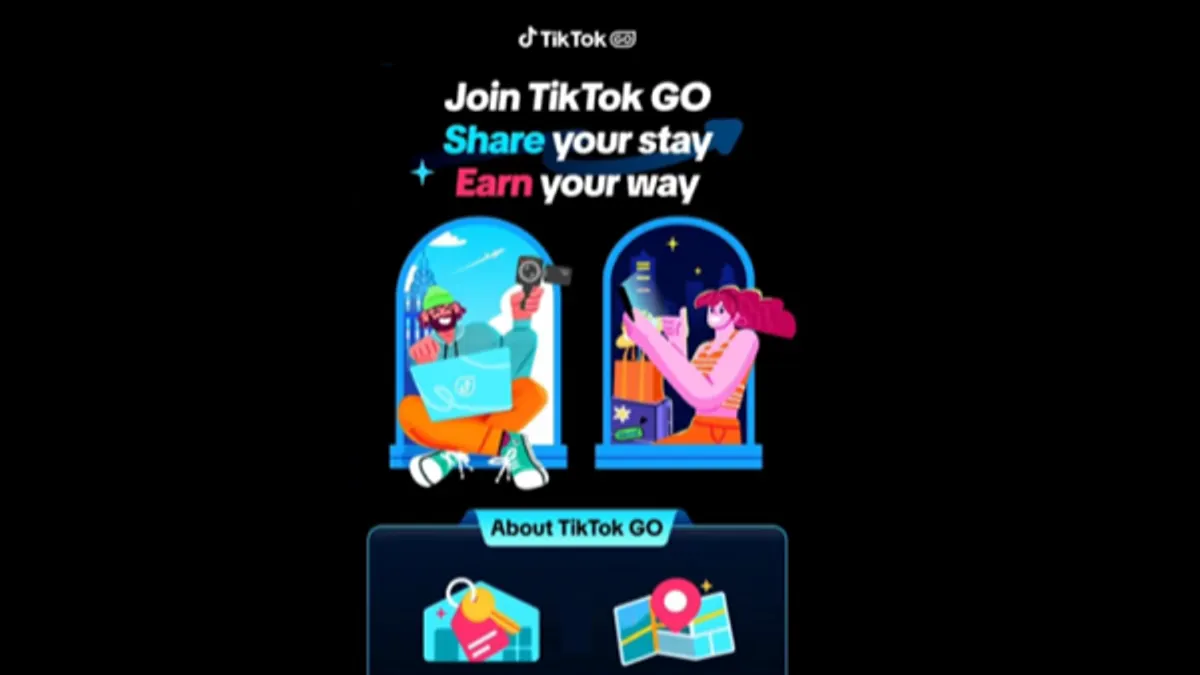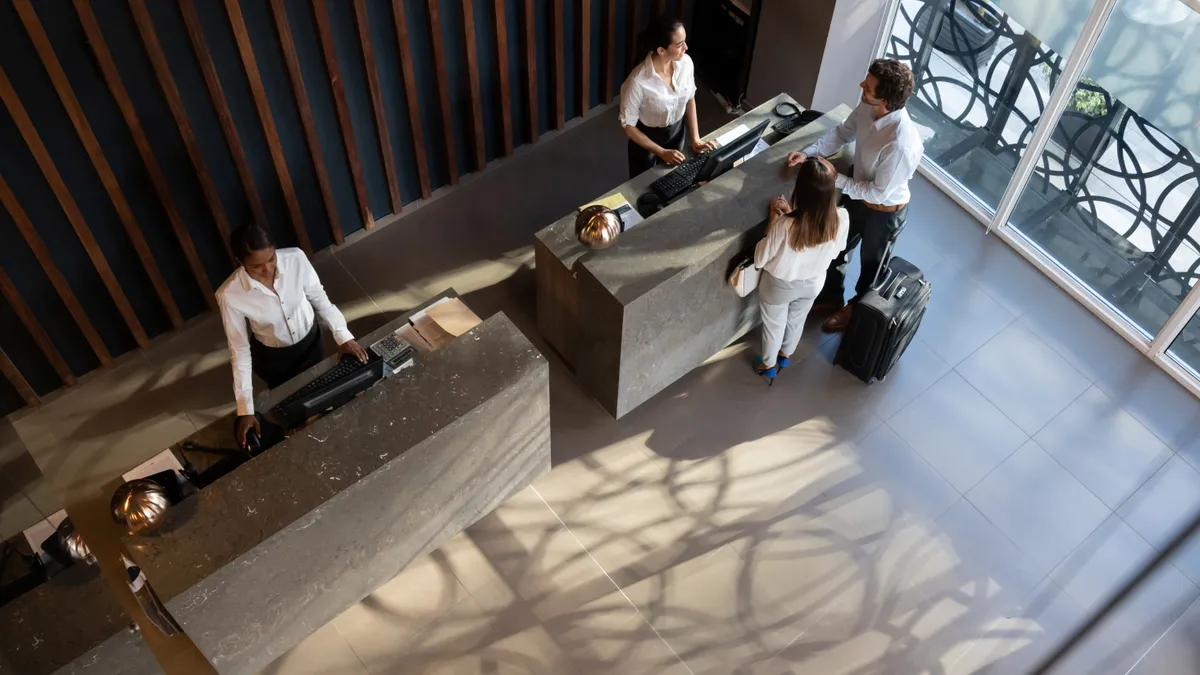Hotel Tech-in is our regular feature that takes a closer look at emerging technology in the hospitality industry.
Holograms sound like something out of the future. “It’s like ‘Star Wars,’” joked Holoconnects founder and CEO Andre Smith.
But the technology is already here. And while numerous industries could potentially implement it, Smith is targeting hotel companies with Holoconnects’ virtual-receptionist hologram tech.
Smith video-chatted with Hotel Dive from the Hospitality Industry Technology Exposition & Conference in Toronto, where his high-tech “holoboxes” — 86-inch transparent boxes that projected 3D holograms of folks willing to step in Holoconnects’ recording booth — were attracting industry pros curious to see what their own holograms looked like. “We’re the talk of the town,” Smith said, with a smile.
While the interactive booth at HITEC generated a lot of fun photos, Smith said the technology is more than a gimmick.
“I think this could be a perfect tool to engage with [a hotel’s] visitors,” he said. “Hospitality has a huge problem, and that's the staff shortage.”
How it works
Don’t confuse holograms with robots. Holograms are projections of real people.
During his recent demonstration at HITEC, Smith stepped briefly off the stage into a Holoconnects recording booth. Though he was inside the booth, conference attendees continued to hear and see him as his lifelike projection appeared on the stage, moving in real time within the holobox as Smith moved elsewhere, out of sight.
What the audience saw was not pre-recorded, because holograms are often ultra-lifelike, full-body livestreams of human beings speaking in real time.
At hotels, the technology could be used to place receptionists in multiple places — or properties. Smith noted an Amsterdam-based operator of small, often staffless hotels would project receptionists from one property to another, so they could respond to guests’ questions as they arise.
To implement the technology across multiple properties, hotels install a central recording booth, which staffers can step into to film themselves. A full-body livestream of the receptionist is then projected to “holoboxes” in hotel lobbies.
The first hotel chain to implement the technology was Aiden by Best Western hotels in Scandinavia, where holographic receptionists guide guests though self check-ins. While welcome messages are pre-recorded, live receptionists are available to step into hologram recording booths when guests have questions.
Smith said the technology is especially beneficial to hotel companies that offer multiple smaller properties without 24/7 on-site staff. The hologram also help to fill in gaps when staffers are out or sick.
Holograms in hotels can also serve other purposes. Smith noted a future contract with a five-star hotel in Germany, where a holobox will project a saxophonist into the lobby. Later in the evening, it will switch to a DJ. The goal of the box in these scenarios, Smith said, is “just enhancing the customer experience.”
The future
While Holoconnects’ technology is live in Europe, the company hopes to expand its presence in North America soon. And though Holoconnects’ holoboxes were a hit at HITEC, there are a few reasons why some hotels may remain reluctant to install them.
Smith noted some high-end hotels that pride themselves on warm service may still prefer in-person receptionists. Plus older guests have been somewhat less approving of the technology; proponents of the holoboxes fall mostly into the 20- to 50-year-old demographic.
The holograms also pose concerns about potentially replacing staff members, though according to Smith, the current risk is minimal due to ongoing staffing shortages. For understaffed hotels, holograms “can take off pressure from staff members.”
Jobs would be more at risk if Holoconnects aggressively pursues a project it’s currently beta-testing: an AI-generated receptionist that would automatically respond to customer questions. But Smith remains skeptical of that technology for now, “because it just doesn’t feel as natural as it should be.
“I don't know if the market really wants that,” he added. For now, Holoconnects’ holograms still constitute “a real human interaction.”
“If you go completely AI, then there are no people needed anymore, so then you're gonna replace staff members,” he said. “That's the question we have: Do we want to be in a situation [where] we’re really going to replace people? Or do we want to be in a situation [where] we're gonna make people's lives easier at their job? For now, it's the second.”



